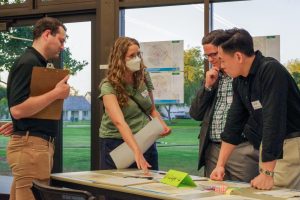Irvine’s Native American heritage
December 9, 2021
November is Native American Heritage Month, which is supposed to help highlight the history and culture of the native groups across the United States. However, most don’t know about the native Kizh tribe, whose land Irvine is built on.
The Kizh native tribe resided in the Orange County area for centuries before the arrival of Spanish settlers in 1771. Their society lived off the land, foraging during the summer and fishing in the winter. A staple food for the Kizh was collecting chia seeds, which they would then dry and roast, turning it into a flour called pinole that they used to make cakes.
The arrival of Spanish explorers changed their way of life as the Kizh were quickly enslaved and forced to work on the missions that occupied the land that was once their homes. They mostly resided at the San Gabrielino mission where they led a series of unsuccessful revolts that led to further slaughter. It was during this time that the Spaniards renamed the Kizh to the Gabrielenos after the mission.
Following the end of the mission system, the Kizh were able to integrate themselves into Mexican society, with most residing near Los Angeles. This peace would end with the Mexican-American War, which saw a spike in anti-Mexican and anti-native sentiments.
“What occurred was genocide,” AP Government teacher Steve Plette said. “But in the United States, there’s this strange relationship where we revere native culture but still treat the native people terribly.”
Under U.S. rule, the Kizh people were quickly singled out, targeted and later enslaved. Once they were arrested, the Kizh would pay for their freedom by working as indentured servants. Others would be dragged out of their jail cells and lynched in the middle of the street.
After attempts at opening a reservation failed, the Kizh abandoned their culture and identified as Mexican American to avoid the violence. Those who attempted to keep their traditions failed. Natives were forced to send their children to The Sherman Indian School in Riverside, as they were assimilated into western culture.
“Despite the forced assimilation through taking of children and replacing their culture, there has fortunately been increased effort in trying to revive the culture within the tribal communities,” anthropology teacher Emily Rhodarmer said.
Though only a couple hundred strong, the Kizh nation still exists in San Gabriel, and you can learn about them at places like the Sherman Indian Museum or by visiting the place where their troubles began with the San Gabriel Mission. The tribal communities themselves are the best teachers of their culture and will help educate anyone on the history of the natives and how to help them keep their culture alive.
























































